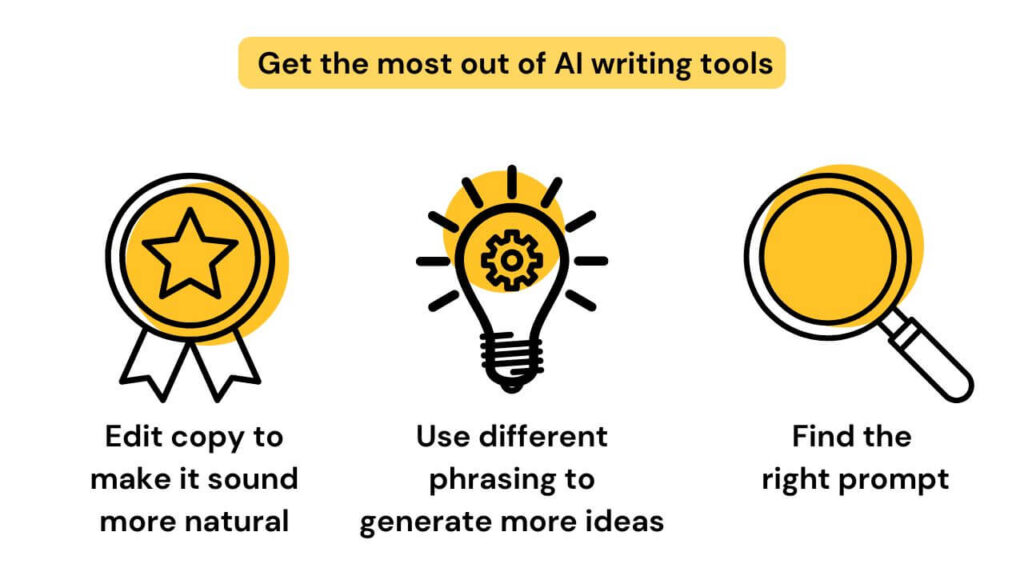Key takeaways
- Conversational search means people now ask full questions like they talk. Your content needs to sound natural and not like a keyword list.
- Pages that answer real spoken questions clearly (like FAQs or blog subheadings) are more likely to get featured in Google results and voice assistants.
- Updating old posts with friendlier language, adding schema, and using AI tools smartly helps you stay visible as search keeps shifting toward human-style queries.
Search has changed, and it’s time for your content to change with it.
People now talk to their devices.
Instead of searching “weather Brisbane,” they’ll ask, “What’s the weather in Brisbane today?”
This means your trusted SEO playbook needs an update.
Because, at this point, you can’t ignore voice search and natural language.
Now, you need to focus on creating content that sounds natural and answers real questions.
Here are ways to optimise your site for both search engines and real people.
#1 — make your content sound like someone’s talking
We’ve all encountered websites that sound stiff and robotic.
But people don’t naturally talk like that.
When they ask their phone for directions, it’s not “directions to the airport,” it’s “How do I get to the airport?”
If you want to rank higher in 2025, write like a person, not a machine.
Keep sentences short and simple.
Skip the buzzwords and just keep it real.
And, focus on being clear, every time.
Almost 70% of people using Google Assistant speak to it in full sentences, not just keywords.
Here’s an example:
- Bad: “Our platform delivers scalable solutions.”
- Good: “We help you grow without the hassle.”
See the difference?
The first one is a lot of cliche, business-talk.
The other’s straightforward and easy to get.
So, make sure you read everything you write out loud.
If it doesn’t sound like something someone would say in real life, change it.
Research your audience and write for them, not the algorithm.
#2 — start using long-tail keywords that look like real questions
Forget the short, broad keywords.
People ask full questions now, so focus on long-tail keywords instead.
“How do I clean white sneakers without bleach?”
“What’s the best meal prep service for vegetarians?”
Find specific, question-based keywords to help you create content that matches what people are actually searching for.
And it’s easier than you think to find them.
Use tools like AnswerThePublic, AlsoAsked, and Google’s “People also ask” box to find these real questions.
Your support logs are a goldmine for actual questions.
Customer service emails, live chats, and review questions are full of phrases your audience uses every day.
Once you have your questions, build content around them.
Use the question as your headline, and put the answer right at the start.

#3 — turn real questions into a powerful FAQ section
Most FAQ pages are missed opportunities.
They’re filled with generic questions no one actually asks.
To drive traffic, your FAQ needs to reflect the real concerns of your audience.
Start gathering questions from:
- Support tickets
- Live chat logs
- Social media comments
- Review questions
- Forum threads
Don’t reword them.
Use the exact questions people are asking
For example:
Q: “Can I return sale items?”
A: Yes. Sale items can be returned within 14 days. Just keep the receipt.
Clear, simple, and to the point.
Remember, you’re not writing a legal contract.
Answer like you’re a helpful friend.
You can also set each question as its own H3 heading.
This helps Google understand your content and increases your chances of appearing in featured snippets.
#4 — add schema markup so bots actually understand your answers
Schema markup sounds techy.
But it’s just code that tells Google what each part of your page is.
It’s a great fit for Q&A content, like FAQs
.It helps search engines know you’re giving clear Q&A content.
You don’t need to write any code.
Tools like Yoast, Rank Math, or Google’s Structured Data Helper do the heavy lifting.
Add schema anywhere you’re answering a question.
Blog posts, product pages, knowledge base articles… it all counts.
When you use schema markup, it could get your content featured in snippets or even voice search results.
That means your page could land at the top of Google.
So, don’t overthink it.Just mark up any page with questions and answers.
Then, let Google handle the rest.

#5 — update old posts with better phrasing
Dig through your old blog posts.
Especially ones written before 2021.
Odds are, they sound like keyword soup.
Look for clunky headers and weird keyword stuffing.
They might sound like: “Best affordable laptops students 2020”
When they should be sounding like: “What are the best budget laptops for uni students?”
One sounds like an old-school SEO trick.
The other’s something a person would actually search for.
Make sure you update your titles, subheadings, and intros to fit how people search now.
But don’t touch URLs unless they’re broken.
You wouldn’t want to mess up any backlinks you might have.
Just clean up the copy.
While you’re in there, check for outdated info too.
Nothing kills trust faster than an article that says TikTok isn’t popular yet.
#6 — upgrade your internal site search so it speaks human too
Site search can be frustrating for users.
Type “return policy,” but if the page is labelled “refund procedure,” it’ll be a problem.
Modern tools like Algolia or ElasticSearch use natural language processing.
They get what people mean.
Even if they don’t phrase it perfectly.
This also signals to Google that people like your site.
Helping users find what they need fast keeps them hooked.
The faster they get answers, the longer they stay.
When your search tool works smoothly, bounce rates drop.
That means your website visitors are sticking around.
At the end of the day, better user experience is all about relevance.
If your search gives them what they’re after, they’ll keep coming back.
A good user experience helps both your visitors and your rankings.

#7 — use AI tools to draft, but edit hard so it sounds like you
AI can speed up content creation.
But it won’t sound human unless you put your stamp on it.
There’s no need to be shy about using AI for brainstorming ideas, outlining FAQs, or drafting meta descriptions.
Around 80% of people now use AI-generated content to help with nearly half of their searches.
But don’t hit publish straight away.
Add your personal touch to make it pop.
AI doesn’t always nail the tone.
It can get rambling and, at times, even make things up.
You’re the expert on your audience, not the AI.
So always rewrite what the AI generates.
Make it snappy.
Make it yours.
And make it on-brand.
The best content still needs your unique voice to shine.
Conversational search is changing the way SEO works
If your content still sounds like it’s from 2015, you’re already fallen behind.
Search has changed a lot.
AI is influencing how people search for things online.
Google’s rewarding content that gives clear and valuable answers.
And don’t think it’s just something that is “nice-to-have”.
You practically need to implement it to stay competitive.
Optimising for conversational search means being direct, useful, and easy to understand.
It means cleaning up old posts, using real questions, and writing how people actually speak.
There’s no better time than to start now.
More people are asking their phones full questions instead of typing short keywords.
So change the way you approach your content.
Don’t just write for the sake of rankings and keywords.
Focus on what people are really looking for.
That’s how you stay relevant.
And that’s how you get found.


